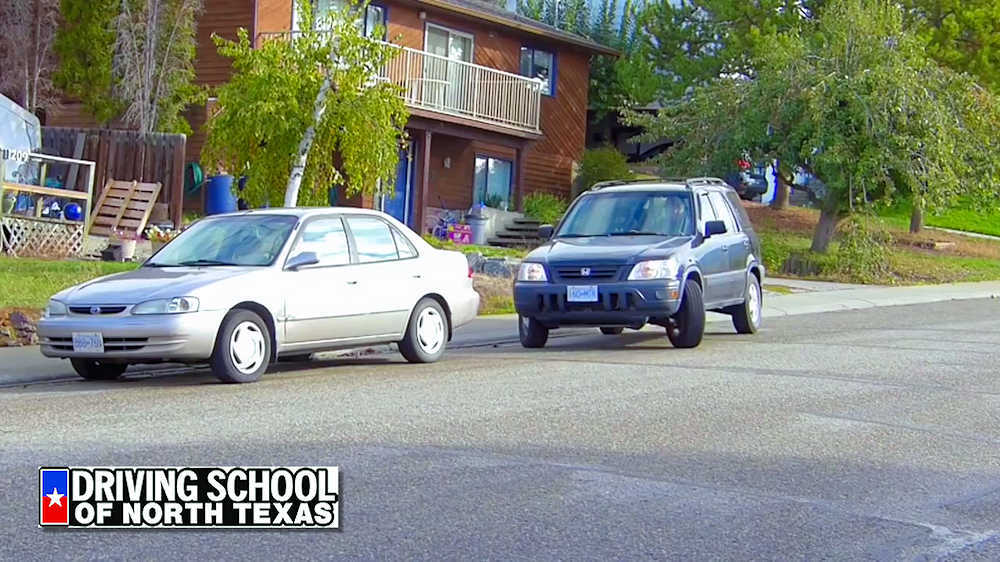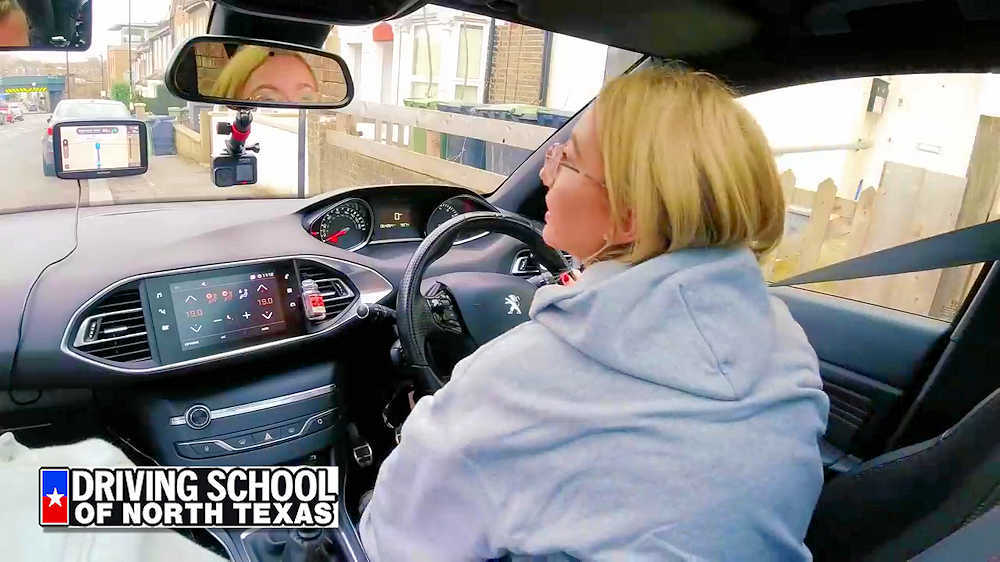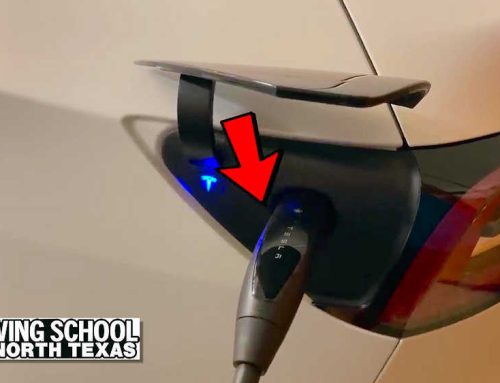Table of contents
- Prepare Mentally and Physically for Training
- Set Clear Goals and Objectives
- Be Punctual and Attend All Sessions
- Communicate with Your Instructor
- Practice Outside of Training
- Stay Positive and Stay Motivated
- Continuously Improve and Adapt
- Frequently Asked Questions
- How long does the driver training program typically last?
- Are there any age restrictions for enrolling in driver training?
- Can I bring my own vehicle for the training sessions?
- What are the qualifications and experience of the instructors?
- Is there any financial assistance or payment plans available for the driver training program?
- Conclusion
Are you ready to make the most out of your driver training? Whether you’re a new learner or looking to improve your skills, these tips will help you maximize your experience and become a confident driver. From preparing yourself mentally and physically to staying motivated throughout the process, implementing these strategies will set you up for success.

Firstly, it’s crucial to prepare both mentally and physically before starting your driver training. Get enough rest, eat well-balanced meals, and ensure you’re in the right frame of mind. Setting clear goals and objectives is also essential. Define what you want to achieve from the training sessions, whether it’s passing your driving test or becoming more comfortable with specific maneuvers. By being punctual and attending all sessions, you’ll be able to make consistent progress towards your goals. Remember that communication with your instructor is key; don’t hesitate to ask questions or share any concerns you may have. Additionally, practice outside of training by driving in various situations such as different weather conditions or busy traffic areas. This extra practice will help reinforce what you’ve learned during your lessons and build confidence behind the wheel. Stay positive throughout the journey and stay motivated by celebrating small accomplishments along the way. Lastly, continuously seek ways to improve and adapt as a driver; this mindset will ensure that you become a skilled and responsible driver for years to come.
By following these tips for getting the most out of your driver training, you’ll not only gain valuable skills but also enjoy a smoother learning process overall. So buckle up, stay focused, and get ready to embark on an exciting journey towards becoming a confident driver!
Prepare Mentally and Physically for Training
Get ready to amp up your driving skills by preparing yourself mentally and physically for training. Mental preparation is key when it comes to becoming a skilled driver. Before you even step into the car, take some time to visualize yourself confidently maneuvering through different traffic scenarios and handling any challenges that may arise. This mental rehearsal will help you build confidence and reduce anxiety behind the wheel.
In addition to mental preparation, physical conditioning is also important for effective driver training. Driving requires good coordination, reflexes, and endurance. Regular exercise can improve your overall fitness level, helping you stay alert and focused during long hours of training. Incorporate activities such as cardio exercises, strength training, and flexibility exercises into your routine to enhance your physical capabilities on the road.
By mentally preparing yourself and maintaining physical conditioning, you’ll be setting yourself up for success in your driver training. Now that you’re ready in mind and body, it’s time to set clear goals and objectives for what you want to achieve during your training sessions. Remember that every moment is an opportunity for learning and improvement as you work towards becoming a confident and skilled driver.
Set Clear Goals and Objectives
To get the most out of your driver training, it is important to set clear goals and objectives. Start by identifying areas of improvement, such as parallel parking or highway merging, that you want to focus on during your training. Then, create a training plan that outlines specific tasks and exercises to help you improve in these areas. Finally, track your progress throughout your training to see how far you’ve come and identify any areas that still need work. By following these steps, you’ll be able to stay focused and motivated as you work towards becoming a better driver.
Identify Areas of Improvement

Find areas where you can improve by analyzing your driving habits, such as braking too hard or not checking blind spots, which account for 25% of all accidents. To help you identify these areas and make the necessary improvements, here are some tips for self-assessment:
- Pay attention to your braking technique: Are you frequently slamming on the brakes or waiting until the last moment to brake? Practice smooth and gradual braking, anticipating stops ahead and giving yourself enough time to slow down.
- Take note of your blind spot checks: Do you often forget to check your blind spots before changing lanes or making turns? Make it a habit to always glance over your shoulder and use your mirrors effectively to ensure there are no vehicles in your blind spots.
By pinpointing these areas for improvement, you can work towards becoming a safer and more skilled driver. Once you have identified these habits that need refining, you can create a training plan that focuses on addressing them effectively.
Create a Training Plan
Once you’ve identified areas for improvement in your driving habits, it’s important to create a training plan that focuses on addressing those specific areas effectively. To do this, start by creating a training schedule that outlines when and how often you will practice. Consistency is key, so try to set aside dedicated time each week for your driver training. Additionally, consider setting training milestones for yourself. These can be small goals that you want to achieve within a certain timeframe, such as improving your lane changing skills or mastering parallel parking. By breaking down your overall improvement plan into smaller milestones, you can track your progress more easily and stay motivated.
Incorporating regular practice sessions into your routine will allow you to build upon the skills you need to improve. Create a training schedule that suits your availability and commit to sticking with it. Set achievable milestones along the way to measure your progress and celebrate each accomplishment as they come. With a well-structured training plan in place, you’ll be able to focus on honing in on those specific areas of improvement effectively.
Transitioning into the subsequent section about ‘track your progress,’ remember that keeping track of how far you’ve come is essential for monitoring growth and identifying further areas where attention may be needed without losing sight of the end goal.
Track Your Progress
Keep yourself motivated by regularly tracking your progress and celebrating milestones, such as successfully completing parallel parking with a 95% accuracy rate. Monitoring your progress allows you to evaluate your performance and identify areas where you need improvement. By keeping track of your achievements, you can see how far you’ve come and stay motivated to continue working towards your goals. Celebrating milestones not only boosts your confidence but also serves as a reward for all the hard work you’ve put into your driver training.
To monitor your progress effectively, here are three tips to consider:
- Use a driving journal or app: Keep a record of each practice session, noting what skills you focused on and any challenges you faced. This will help you track improvements over time.
- Set specific goals: Break down larger driving skills into smaller, achievable goals. For example, aim to consistently use proper signaling during lane changes or maintain a smooth speed while merging onto highways.
- Seek feedback from instructors: Regularly check in with your driving instructor to gain insights into areas where you excel and aspects that require more attention. Their input will provide valuable guidance for further improvement.
By monitoring your progress and evaluating performance through these methods, you can stay on top of your driver training journey. Now let’s transition into the subsequent section about being punctual and attending all sessions without missing any valuable opportunities for learning.
| BOOK YOUR DRIVING CLASS TODAY! |
| Driving School of North Texas |
Be Punctual and Attend All Sessions
Arriving on time and attending every session is key to getting the most out of your driver training experience. To stay focused and engaged during your training, it’s important to arrive punctually for each session. Being present from start to finish allows you to fully immerse yourself in the learning process and make the most of your time with your instructor. By being attentive and committed, you can ensure that you absorb all the necessary information and develop the skills needed to become a safe and confident driver.
In addition to being punctual, don’t hesitate to ask questions and seek clarification during your sessions. Your instructor is there to guide you through the learning process, so take advantage of their expertise. If something isn’t clear or if you’re unsure about a particular concept or technique, speak up! Asking questions not only helps you gain a deeper understanding but also shows your instructor that you are actively engaged in the training. Remember, no question is too small or insignificant when it comes to mastering driving skills.
By being punctual and proactive in seeking clarification, you set yourself up for success in your driver training. These habits will help you make the most out of every session and ensure that you are fully prepared for each step of the learning process. Now that we’ve covered how important it is to be punctual and seek clarification, let’s move on to discussing how effective communication with your instructor can enhance your overall driver training experience.
Communicate with Your Instructor

Now that you understand the importance of being punctual and attending all your driver training sessions, it’s time to focus on another crucial aspect: communicating with your instructor. Building trust and establishing a good line of communication with your instructor is essential for getting the most out of your driver training experience.
To build trust with your instructor, be open and honest about your goals, concerns, and any previous driving experiences you may have had. Let them know what you hope to achieve during the training sessions so they can tailor their instructions accordingly. By being transparent about your needs and expectations, you’ll create a solid foundation for effective communication throughout the process.
Don’t hesitate to ask questions during your sessions. Your instructor is there to guide you and address any doubts or uncertainties you may have. Whether it’s about specific maneuvers, traffic rules, or general driving techniques, seeking clarification will help you grasp concepts more effectively. Remember that no question is too small or insignificant when it comes to learning how to drive safely and confidently.
Asking questions and actively engaging in conversation with your instructor will not only enhance your understanding but also foster a positive learning environment. Now that we’ve covered the importance of communication during driver training, let’s move on to discussing how practicing outside of training can further refine your skills on the road.
Practice Outside of Training
To truly level up your driving skills, it’s time to hit the road outside of your training sessions and put those newly acquired knowledge and techniques into practice. Practice makes perfect, they say, and this holds true for driving as well. By practicing outside of your training sessions, you can reinforce what you’ve learned and develop your skills further.
One way to practice is by finding an empty parking lot or quiet residential area where you can maneuver the car without any distractions. This will allow you to focus solely on practicing specific techniques such as parallel parking, three-point turns, or lane changes. By dedicating time to practice these maneuvers repeatedly, you’ll become more comfortable with them and gain confidence in executing them correctly on the road.
Additionally, consider taking every opportunity to drive whenever possible. Whether it’s running errands or going for a leisurely drive around town, each experience behind the wheel offers a chance to apply what you’ve learned during your training sessions. The more varied situations and environments you encounter while driving, the better equipped you’ll be to handle different scenarios confidently.
Now that you know how important it is to practice outside of your training sessions, let’s move on to the next step: staying positive and staying motivated.
Stay Positive and Stay Motivated
Maintaining a positive mindset and staying motivated throughout your driving journey is crucial for success. Learning to drive can be challenging at times, but it’s important to remember that every mistake is an opportunity to learn and grow. Instead of getting discouraged when things don’t go as planned, use these setbacks as fuel to keep pushing forward. Remind yourself of the reasons why you wanted to learn how to drive in the first place, whether it’s the freedom of being able to go anywhere or the convenience of not relying on others for transportation. Stay focused on your goals and believe in yourself.
To stay motivated, set small achievable milestones along the way. Celebrate each accomplishment, no matter how small it may seem. Whether it’s successfully parallel parking or smoothly merging onto a busy highway, acknowledge your progress and give yourself a pat on the back. Surround yourself with positive influences who believe in your abilities and encourage you to keep going. Remember that everyone learns at their own pace, so avoid comparing yourself to others and focus on your own growth.
Staying motivated and maintaining a positive mindset are key factors in getting the most out of your driver training. Believe in yourself and stay focused on your goals throughout this journey. Celebrate even the smallest victories along the way, as they contribute to your overall progress. With determination and positivity, you will continuously improve and adapt as you strive towards becoming a confident driver.
Continuously improving and adapting requires constant effort and dedication throughout the learning process, but it will ultimately lead to a greater sense of confidence and skill behind the wheel.
Continuously Improve and Adapt

Reflect on your training experience to identify areas of improvement and build upon your strengths. Seek ongoing education and training opportunities to enhance your skills and stay updated with the latest driving techniques. It is crucial to stay updated on traffic rules and regulations in order to ensure safe and responsible driving practices.
| BOOK YOUR DRIVING CLASS TODAY! |
| Driving School of North Texas |
Reflect on Your Training Experience
Looking back on your driver training experience, you might be surprised to learn that 95% of accidents are caused by human error. This statistic highlights the importance of reflecting on your training experience and continuously improving your skills to become a safer driver. Reflective learning is an essential aspect of driver training as it allows you to identify areas where you can improve and develop strategies to prevent future mistakes. By engaging in self-evaluation techniques such as analyzing your driving performance, identifying patterns of errors, and seeking feedback from experienced drivers or instructors, you can gain valuable insights into your strengths and weaknesses.
To help you visualize the process of reflective learning, here’s a table that outlines some key aspects to consider during your self-evaluation:
| Aspects for Self-Evaluation | Questions to Ask Yourself | Action Steps |
|---|---|---|
| Traffic Awareness | Did I anticipate potential hazards effectively? | Practice scanning intersections and checking blind spots regularly. |
| Defensive Driving | How well did I react to unexpected situations? | Enroll in defensive driving courses or seek guidance from experienced drivers. |
| Communication Skills | Was my communication with other road users clear? | Focus on using signals effectively and practicing assertiveness when needed. |
Reflecting on your training experience not only helps identify areas for improvement but also reinforces the knowledge and skills gained during formal instruction. By taking the time to evaluate your progress as a driver, you set yourself up for continuous growth and improvement. As you reflect on your journey so far, it becomes evident that seeking ongoing education and training is crucial for further enhancing your driving abilities.
NOTE: Please note that this response includes markdown formatting for the table requested but may not appear properly formatted depending on where it is viewed.
Seek Ongoing Education and Training
Reflecting on your driver training experience is important, but it doesn’t end there. To truly get the most out of your training, you should seek ongoing education and training. Continuous learning is key to becoming a skilled and confident driver. By seeking additional education and training opportunities, you can further enhance your skills and stay up-to-date with the latest advancements in driving techniques.
There are many ways you can continue your driver education journey. Consider enrolling in advanced driving courses that focus on specific areas such as defensive driving or skid control. These courses will teach you advanced techniques that go beyond the basics covered in standard driver training programs. Additionally, attending workshops or seminars led by experienced professionals can provide valuable insights and tips for improving your driving skills.
To convey a deeper meaning for the audience, here are four key benefits of seeking ongoing education and training:
- Advanced driving courses: Learn advanced techniques to enhance your driving skills beyond the basics covered in standard training programs.
- Workshops or seminars: Gain valuable insights and tips from experienced professionals to further improve your driving skills.
- Defensive driving courses: Enroll in courses that focus specifically on defensive driving techniques for a safer driving experience.
- Skid control training: Learn how to effectively handle skidding situations and improve your overall control of the vehicle.
By continuously seeking education and training opportunities, not only do you improve as a driver but also ensure that you remain updated on traffic rules and regulations, stay informed about the latest technology and advancements in the automotive industry, and become a safer and more responsible driver on the road.
Stay Updated on Traffic Rules and Regulations

Staying updated on traffic rules and regulations is essential for every driver to ensure safe and legal driving on the road. Traffic safety should always be a top priority, and being aware of the latest rules can help prevent accidents and maintain order on the streets. By regularly refreshing your knowledge of traffic laws, you can stay informed about any changes or updates that may have occurred since you last took your driver’s training. This will help you avoid potential violations and fines while also promoting a culture of responsible driving.
In addition to knowing the rules, staying updated on traffic regulations allows you to practice defensive driving techniques effectively. Understanding how to anticipate other drivers’ actions and safely respond to different situations is crucial for avoiding collisions. By keeping yourself informed about current traffic rules, you can adapt your driving style accordingly. For example, if there are new speed limit restrictions in certain areas or changes in right-of-way protocols, being aware of these updates will enable you to adjust your approach when encountering such scenarios on the road. Ultimately, by staying up-to-date with traffic rules and regulations, you contribute to making roads safer for everyone while also ensuring your own well-being behind the wheel.
Frequently Asked Questions
How long does the driver training program typically last?
The duration of a driver training program typically varies depending on the specific requirements and regulations of your state or country. In most cases, these programs can range from a few weeks to several months. However, it is important to note that the length of the program may also depend on individual factors such as your learning progress and availability for training sessions. Additionally, in many places, completing a driver training program is mandatory before obtaining a driver’s license, ensuring that you gain the necessary knowledge and skills to become a safe and responsible driver on the road.
Are there any age restrictions for enrolling in driver training?
There are typically no age restrictions for enrolling in driver training programs. These programs are designed to provide instruction and guidance to individuals of all ages who are looking to obtain their driver’s license. The duration of the program can vary depending on the specific course and the individual’s progress, but it generally lasts for a few weeks or months. Whether you are a teenager or an adult, driver training can help you gain the necessary skills and knowledge to become a safe and confident driver on the road.
Can I bring my own vehicle for the training sessions?
You can bring your own vehicle for the training sessions, which has its benefits. Using your own vehicle allows you to practice in a familiar setting and become comfortable with its specific features. It also gives you the opportunity to learn how to maneuver your own car effectively. However, there are advantages to using the vehicles provided during driver training as well. These vehicles are equipped with dual controls, ensuring the instructor’s ability to intervene if necessary. Additionally, they are specifically designed for teaching purposes, allowing you to focus on learning without worrying about potential wear and tear on your personal vehicle. Ultimately, whether you choose to bring your own vehicle or use a provided one depends on what makes you feel most confident and comfortable during your driver training sessions.
What are the qualifications and experience of the instructors?
Instructor qualifications and teaching techniques are crucial factors to consider when choosing a driver training program. You want instructors who have extensive experience and the necessary qualifications to effectively teach you the skills you need to become a safe and confident driver. Look for instructors who hold valid teaching certifications, such as being certified by a recognized driving school or having completed an instructor training program. Additionally, it is important that instructors stay up-to-date with current driving laws and regulations, ensuring they can provide accurate information during your training sessions. Effective teaching techniques involve clear communication, patience, and the ability to adapt their instruction style to meet the needs of each individual student. By choosing a driver training program with qualified instructors who employ effective teaching techniques, you can maximize your learning experience and gain the most out of your driver training.
Is there any financial assistance or payment plans available for the driver training program?
Financial assistance options and payment plans are available to help you make the most out of your driver training program. We understand that the cost of driver training can be a burden for some individuals or families, which is why we offer various options to lighten the financial load. Whether it’s scholarships, grants, or flexible payment plans, our goal is to ensure that everyone has access to quality driver education without breaking the bank. So don’t let finances hold you back from achieving your driving dreams – take advantage of our available financial assistance options and payment plans today!
Conclusion

In conclusion, by following these tips, you can truly get the most out of your driver training. Remember to prepare yourself both mentally and physically for each session, as this will help you stay focused and alert on the road. Set clear goals and objectives for yourself, and make sure to communicate them with your instructor so they can tailor the training to meet your needs.
Additionally, make it a point to be punctual and attend all sessions. Consistency is key in building good driving habits. Practice outside of training as well, whether it’s through online simulations or simply taking short drives around your neighborhood. And above all else, stay positive and motivated throughout the process. Learning to drive can be challenging at times, but with the right mindset and determination, you’ll conquer any obstacles that come your way.
Lastly, remember that learning how to drive is an ongoing process. Continuously seek opportunities for improvement and adaptation. Stay up-to-date with traffic rules and regulations, practice defensive driving techniques regularly, and never stop honing your skills behind the wheel. With time and practice, you’ll become a confident and skilled driver who is ready to take on any road ahead. So keep pushing forward – success is just around the corner!
| BOOK YOUR DRIVING CLASS TODAY! |
| Driving School of North Texas |
It’s time to put this blog post in park, but your driving journey is far from over. At the Driving School Of North Texas, we are committed to making the roads safer by producing confident and responsible drivers. No matter your experience or comfort level, our seasoned instructors in McKinney, Frisco (East), Frisco (West), and Allen, TX are prepared to guide you every step of the way. Ready to get behind the wheel? Contact us at 214-504-9292 or book your next lesson at DrivingSchoolOfNorthTexas.com. Fasten your seatbelts and prepare for an incredible driving adventure!
Contact us at either of 4 convenient locations:
Driving School of North Texas
204 N. Greenville #300
In the CiCi’s Pizza Center
Allen, Texas 75002
214-383-9795
https://goo.gl/maps/fjZfRkMFqv2UPsjj9
Driving School of North Texas
6449 Coit Road #114
South of Centennial High
School Frisco, Texas 75035
469-633-7110
https://goo.gl/maps/6NwoSzp3AXJkbyacA
Driving School of North Texas
4433 Punjab Way #401
Frisco, Texas 75033
214-705-9959
https://goo.gl/maps/kEdTkLsVfwfa3ke39
Driving School of North Texas
4900 Eldorado, #132
McKinney, Texas 75070
214-504-9292
https://goo.gl/maps/Ls54fbeQi2JQMqrW6





